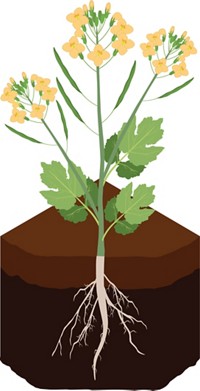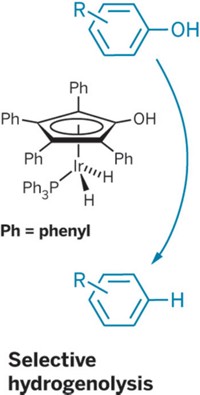Advertisement
Grab your lab coat. Let's get started
Welcome!
Welcome!
Create an account below to get 6 C&EN articles per month, receive newsletters and more - all free.
It seems this is your first time logging in online. Please enter the following information to continue.
As an ACS member you automatically get access to this site. All we need is few more details to create your reading experience.
Not you? Sign in with a different account.
Not you? Sign in with a different account.
ERROR 1
ERROR 1
ERROR 2
ERROR 2
ERROR 2
ERROR 2
ERROR 2
Password and Confirm password must match.
If you have an ACS member number, please enter it here so we can link this account to your membership. (optional)
ERROR 2
ACS values your privacy. By submitting your information, you are gaining access to C&EN and subscribing to our weekly newsletter. We use the information you provide to make your reading experience better, and we will never sell your data to third party members.
Biological Chemistry
Waxy Wheat
High-throughput method yields wheat that is richer in branched starches
by Elizabeth K. Wilson
December 6, 2004
| A version of this story appeared in
Volume 82, Issue 49

Scientists at seattle-based agricultural company Anawah have pioneered a method to rapidly and efficiently produce strains of wheat containing large amounts of branched starches known as amylopectins.
Such strains are desirable to the food industry and paper and glue manufacturers because branched starches have a firmer texture and greater strength. However, the most widely used wheat varieties contain starch with a significant amount of the unbranched polysaccharide amylose.
Plant geneticists have spent considerable time trying to breed so-called waxy wheat, which contains larger amounts of amylopectins. Anawah scientists use a high-throughput genetic modification method known as TILLING (targeting induced local lesions in genomes) to rapidly and efficiently generate such strains.
With the technology, Anawah molecular biologist Ann J. Slade and colleagues are able to selectively screen for genetic mutations that inactivate enzymes involved in generating amylose, yielding strains of wheat with reduced amounts of the unbranched polymer [Nat. Biotechnol., published online Dec. 5, http://dx.doi.org/10.1038/nbt1043]. Strains with these mutations should yield a line of wheat with more amylopectins.
The study illustrates the power and utility of the TILLING method, says Robert A. Graybosch, a research geneticist at USDA's Agricultural Research Service in Lincoln, Neb. "If we had had access to the technology 10 years ago, we could have saved ourselves a good deal of breeding effort," he says.
According to Graybosch and geneticist Toshiki Nakamura at Tohoku National Agricultural Experiment Station, Morioka, Japan, the method can identify new mutations in a polyploid plant such as wheat. These plants have multiple sets of genes, making it extremely difficult to track induced mutations.





Join the conversation
Contact the reporter
Submit a Letter to the Editor for publication
Engage with us on Twitter